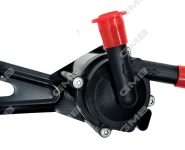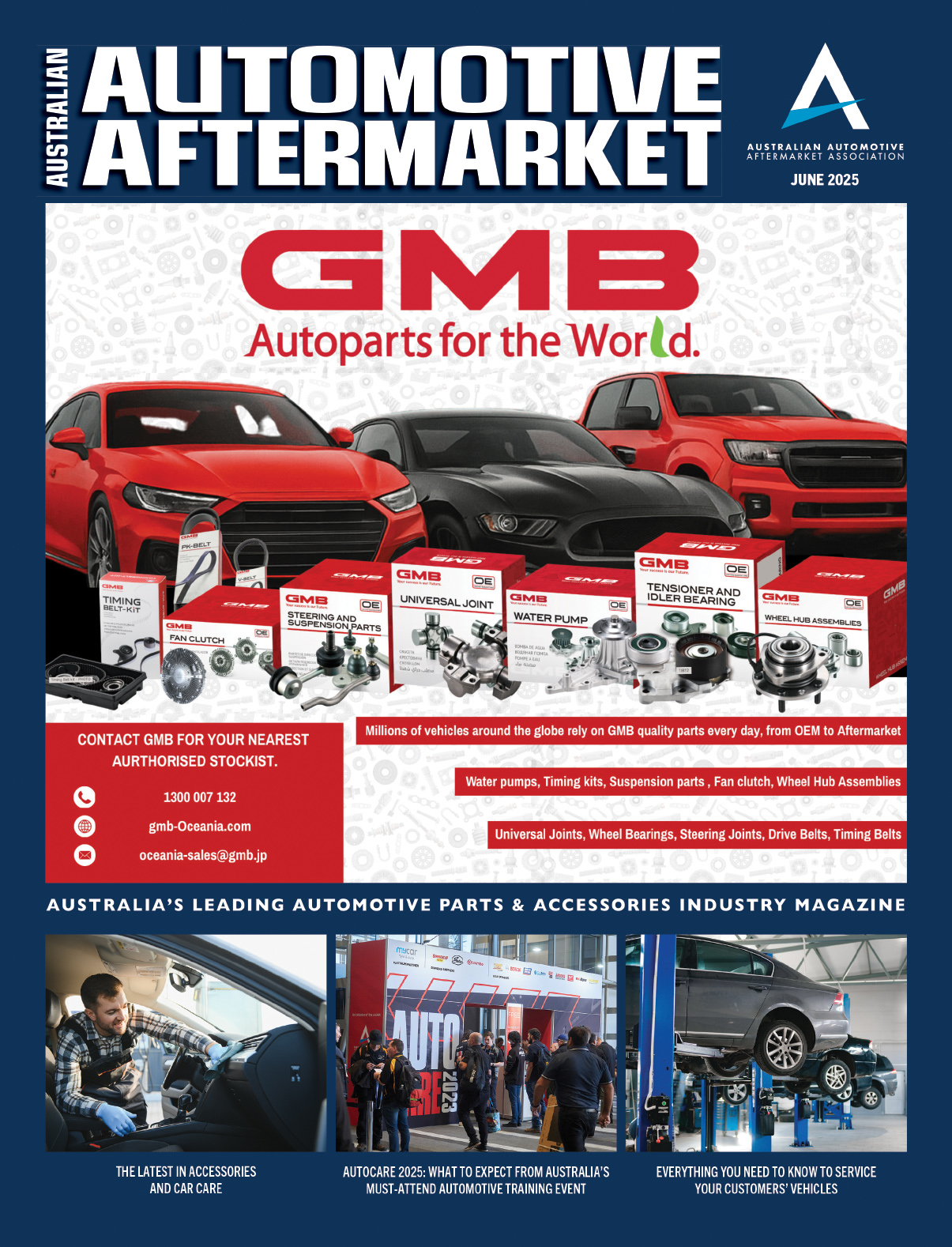REDUCING WATER PUMP REPAIR COMEBACKS
GMB says using its OE quality parts can keep customers happy and prevent them from coming back with complaints
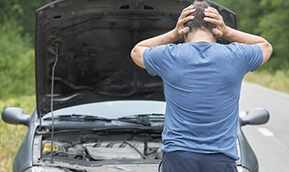
Nobody on earth likes comebacks. A comeback is a lose-lose situation because customers don’t want to go through the hassle of bringing their car back to the shop; shop managers are reluctant to deal with upset customers; technicians don’t like to redo the work on a vehicle; and the tech and the shop lose revenue.
Comebacks are expensive, and they make your business look bad. Comeback customers are more likely to leave negative reviews online for your business, which will cause you to lose future customers.
Your shop likely doesn’t charge for labour for comebacks, and that means your shop will lose a lot of money on comeback repairs.
For example, water pump replacements are easy, but time-consuming. They usually take one to three hours. That means your shop may lose up to $400 in labour alone for one comeback repair.
Speaking of lost revenue, in some cases your shop may have to replace the water pump and/or related parts. Of course, this will come out of your shop’s pocket, not the customer’s.
In a nutshell, comebacks cost a lot of money. That is why you want to prevent comebacks as much as possible.
Unfortunately, comebacks still happen too often. Even a simple job like replacing a water pump can generate comebacks if it is not done right.
The best way to reduce comebacks is to train techs how to do things the right way – but replacing a water pump is so simple that shops rarely train how to do it correctly.
GMB has put together a short list below that will help reduce comebacks after a water pump replacement.
Make sure your technicians install water pumps the right way
Comebacks happen either because the primary task wasn’t done correctly, or because something else should have been done at the same time, and wasn’t.
For a water pump job, the things that should be done every time are compare pulley locations, flush the cooling system, inspect the O-ring or seal, use sealant sparingly on carbon and metal gaskets (but don’t put sealant on an O-ring or rubber seal), rotate the pump by hand, and bleed the cooling system.
Take the old pump and set it on a bench next to the new one. It is ok for some small details to be different. The important part is that the pulley is in the exact same position. If it is off just a little, the drive belt or pump will wear prematurely.
A vehicle with a worn out water pump probably has coolant that needs to be completely replaced. If it is not replaced, contaminants in the coolant will cause the pump seals to fail early.
Rubber gaskets, including O-rings, should not be installed with sealant. Sealant will harden the rubber and decrease the elasticity, which will hamper the sealing performance of the rubber, leading to coolant leakage across the mount surface. And that can lead to overheating.
Instead, silicone grease should be used on the rubber to lubricate it, which can ease installation as well as protect the gasket from cracking, pinching, and/or cutting.
Make sure there is no damage to the seal or O-ring due to shipping and handling.
If the water pump mount surface on the engine is clean of all debris (meaning, the old gasket is completely removed), sealant is not necessary to install the new gasket.
But if sealant is used on the gasket, make sure it is thinly and evenly applied across the whole gasket surface. More is not better, says GMB.
Using too much sealant can cause high uneven installation of the water pump, and can also be squeezed into the coolant channel during installation.
The former can cause all sorts of issues for the water pump, such as belt misalignment. The latter can cause sealant to intrude into the water pump shaft seal, which will result in very quick seal failure. The end result would be excess coolant leakage and engine overheating.
Before reinstalling the drive belt, refill the coolant and rotate the pump by hand a dozen times. This brings coolant into the pump to lubricate the seals.
Dry running a pump the first time the engine is started can cause seals to fail prematurely. Most thermostats have a bleed mechanism. Even if it doesn’t, it’s a good idea to bleed air from the thermostat location.
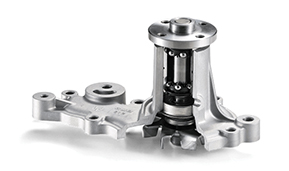
Other components that should be inspected or changed
There are certain things that may need to be done at the same time a water pump is changed.
A customer may dislike hearing about these items, but they dislike bringing their car back in a lot more. When doing a water pump job:
• Change the thermostat – it is a really inexpensive part that can cause headaches down the road.
• Unless they’ve been done very recently, chances are the drive belt(s) should be replaced.
• Some tensioners will last long enough to make it to the third water pump. But many won’t. Inspect the tensioners and replace them if there is any doubt.
• If they show any sign of cracking or blistering, the radiator hoses should be replaced.
• Replacing the timing belt adds cost, but it is a lot cheaper to do it now as compared to replacing it after it fails.
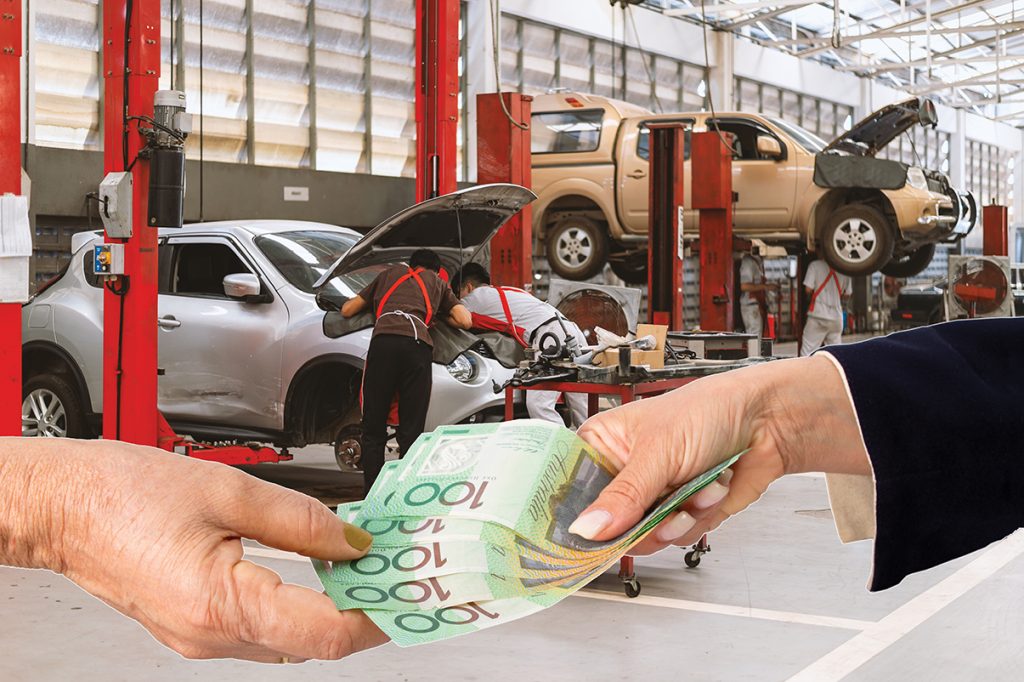
Preventing comebacks
In addition to doing the job correctly the first time, there are ways to prevent comebacks.
Use Fit-For-Purpose parts
GMB says you should make sure you order water pumps, such as GMB water pumps, that are built to OE specifications and quality.
It can be pretty tempting to order cheap water pumps. They’re cheaper, so you’ll get to make a bigger profit off of them, right? Not necessarily.
Cheap water pumps – like all over cheap parts – increase the risk of comebacks.
For example, you don’t really know if they are even designed to pump the same amount of coolant.
OE-quality, fit-for-purpose water pumps don’t come with any fitment, quality, or performance issues, with GMB stating you can’t go wrong with its water pumps.
All GMB water pumps:
• are factory tested for leaks, dimensional precision, bearing noise and durability;
• always match OE coolant flow rate and pressure;
• come with bearings produced to the same specs and design as OEM bearings; and
• are direct replacement parts.
Thoroughly review each comeback
Reviewing comebacks systematically will help you see patterns. This helps you pinpoint certain problems and then solve them.
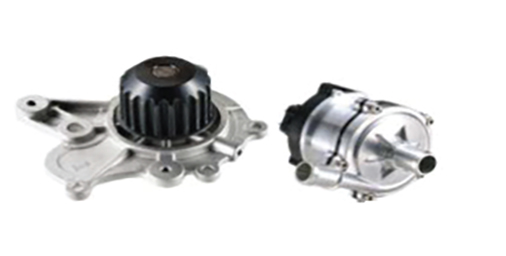
Communicate, communicate, communicate!
One of the biggest causes of comebacks is poor communication. In other words: technicians not feeling comfortable asking for help or clarification; unclear direction – for example, do we always replace a thermostat with every water pump job, or not – and technicians not wanting to recommend additional work.
Like GMB said in the beginning of this article, nobody likes comebacks. Everyone in your shop wants to please your customers. It is impossible to do without good communication, though.
If you want to reduce comebacks caused by poor communication, improve communication.
That means changing the way everyone at your shop communicates with each other.
That includes your managers, service technicians, service writers, and everyone else. Here are a few ways you can do this:
• Find a way to make your technicians feel more comfortable asking for help or clarification. You can ask the shop manager(s) to not blame the technicians for comebacks. Instead, encourage them to work with the technicians to resolve any recurring problems.
• Include your technicians in your meetings about comebacks. Your technicians work in the trenches. They can provide a better insight into some of the problem areas that cause a lot of comebacks. This also gives you an opportunity to listen to their complaints and come up with solutions together.
• Make sure your policies about the additional items that should be done for every job are in writing.
For more from GMB, visit www.gmb-oceania.com



